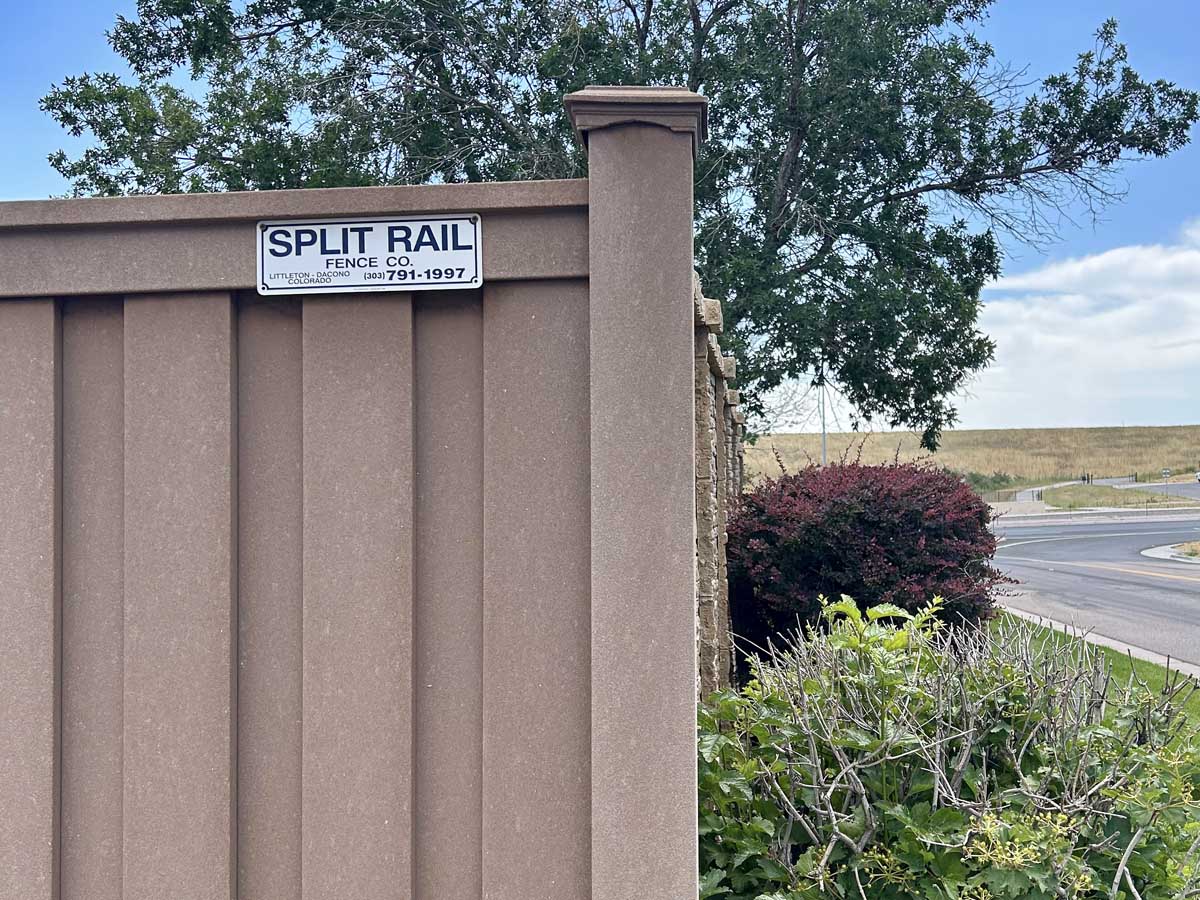Wood is a popular material for fences because of its attractive appearance and durability. As a versatile material that can be carved, painted, or stained, wood can also complement a variety of homes and landscaping styles.
However, fences can be made from a number of other materials and still provide the same benefits to Colorado Springs property owners, such as creating a visible boundary, increasing security, and providing privacy. To determine which material is preferable, it comes down to evaluating a couple of key factors:
- Cost
- Value
- Durability
- Ease of Maintenance
Here is a brief run-down of various fence materials and how they stack up against the versatile, ever-popular cedar wood picket option.
Vinyl vs. Wood Fence
Vinyl is an attractive fence material, made even more appealing by its non-porous and easy-to-clean surface. PVC is the type of vinyl most often used for fencing because of its reputation for durability and affordability. Its synthetic appearance can stand against natural backgrounds, making it less valuable on specific properties.
Vinyl and PVC fencing is moderately more expensive than wood (depending on the type of lumber and the type of vinyl). On the flipside, because it is a type of plastic, vinyl doesn’t need to be treated or stained for longevity the way wood does, and, in general, is more difficult to damage. It will last about five times longer than wood with minimal maintenance, making its slightly higher price tag more worthwhile.
Chain Link vs. Wood Fence
Even with their separate components, including metal stakes, galvanized posts, brackets, and tie wires, chain link fences are almost always cheaper to purchase and install than wood, regardless of the type of lumber in consideration. Both options depend on the height of the fence and the specific source of materials, but chain link fences tend to be a fraction of the cost per linear foot compared to wood fences.
They often add less value to your property in numerous ways. First of all, chain link fences are one of the lesser styles for visual appearance. Also, regardless of height, they don’t offer the same privacy and security as wood. They are easier to damage but less susceptible to natural causes – such as rot, mold, and termite infestation than wood is.
Regarding maintenance, chain link is undeniably more favorable than cedar fencing. It requires minimal upkeep compared to wood, which needs to be regularly retreated or repainted and has all components replaced as time passes.
Metal vs. Wood Fence
Whether you choose aluminum or wrought iron, metal is often a more expensive up fencing material. Ornamental iron is likely the most expensive fence material, with aluminum being its slightly cheaper alternative.
This may be your best material to use, though, because high-quality ornamental iron looks particularly classy and impressive, especially when paired with certain styles of houses and gardens. They are also valuable because of their durability. Although they don’t provide much privacy because of the spaces between rails, they still offer security for children and pets playing in the yard or by a pool. They are also easy to maintain, with rust being one of the only issues you face.
Composite vs. Wood Fence
Composite fencing is made from recycled wood and plastic and is fashioned to resemble wood. As a result, composite materials have a lot of variety, depending on how they are engineered and applied.
Like vinyl, composite fences allow you to capture a look similar to wood that is easier to maintain over time. Composite fencing prices are slightly higher, but the lifetime value is also greater. You also have numerous options for colors and styles. While composite fences do not need to be regularly repainted or stained, remember that they can be warped, expanded, or shrunk by harsh weather.
Selecting the Right Fit for You
Ultimately, you will want to choose a fence material and style that meshes with your overall exterior, including landscapes, gardens, porches, and other features. Not only is that more pleasing to the eye, but it also helps increase your property’s resale value.
When it comes to cost, value, durability, and ease of maintenance, you have to decide which factors are most important to you, depending on your personal tastes, financial goals, and lifestyle.
If you have decided wood fencing is best for you, it’s time to compare the best wood fencing materials. To get more information about various fence materials or guidance on which style is the best fit for you, contact the experts at Split Rail Fence. Call us at (303) 791-1997 or fill out our online form.
We are well-acquainted with the environment and climate of the Colorado Springs and Denver area and can point you in the right direction when it comes to choosing the best material for your property.



